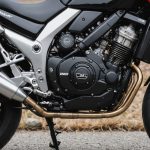Comprehensive Setup Guide for Radar Detectors
Installing radar detectors in luxury vehicles requires attention to detail and understanding of the specific models that best fit high-end cars. These systems can range from simple plug-and-play devices to sophisticated setups integrated with the vehicle’s existing features.
Types of Radar Detectors for Luxury Vehicles
Luxury vehicles often necessitate radar detectors that offer advanced features like GPS technology, stealth operation, and high sensitivity. Custom-installed detectors are highly recommended as they can be discreetly hidden within the vehicle’s existing infrastructure, maintaining aesthetic appeal while providing optimal performance.
Also to see : Transform Your British Sedan: A Comprehensive Guide to Installing a Panoramic Sunroof
Installation Guide for High-End Models
To begin, select an installation guide suited for your vehicle’s make and model. Start by determining the optimal location for the radar detector, ensuring it has an unobstructed view of the road. Hardwiring the detector to the vehicle’s electrical system is usually preferable for a seamless integration. Test the system for functionality once installed.
Common Pitfalls During Installation
Avoid common mistakes such as placing the detector near metal surfaces, which can interfere with its functioning. Improper installation can lead to poor performance or even damage to the vehicle’s electrical system. Ensure that all connections are secure to prevent future malfunctions. Taking these steps ensures a smooth and effective setup for enhanced driving security.
Also read : Essential Tips for Spark Plug Replacement in High-Performance British Engines: Achieve Peak Performance
Calibration Techniques for Optimal Performance
Understanding the nuances of calibration is essential for ensuring performance optimization on the UK’s expansive motorways. The accuracy of vehicle systems, particularly in environments as dynamic as UK motorways, is paramount for both safety and efficiency.
Importance of Calibration
Calibration directly impacts the system’s ability to function accurately under various conditions. For motorways in the UK, where road conditions can vary significantly, proper calibration ensures that vehicle systems like speedometers, navigation aids, and other sensor-based technologies work effectively, enhancing both safety and vehicle performance.
Calibration Methods and Tools
To achieve optimal performance, detailed calibration methods are employed. Common tools include laser-based measuring equipment and software analytics, which help adjust systems to account for road-grade variations and other factors. These methods are crucial because they allow systems to react appropriately to unique dynamics of UK motorways, such as sharp bends, elevation changes, and varying speed limits.
Adjusting for Specific Conditions
Calibration must also consider specific motorway conditions. For instance, adjusting settings for weather conditions and traffic patterns ensures that vehicle systems operate effectively on UK motorways. By fine-tuning the calibration based on real-time data and historical trends, vehicles maintain performance optimization, thus ensuring reliability and safety.
Performance Optimization Tips
When it comes to luxury driving, maximizing your radar detector performance is essential. Here are pivotal tips to enhance performance.
Enhancing Detection Range
For luxury vehicles, optimizing the detection range of your radar detector necessitates understanding key factors. The positioning of the radar detector greatly affects its ability to identify signals. Ensure it’s mounted high on the windshield for an unobstructed view. Proximity to metallic components can hinder performance, so avoid areas with a lot of metal, such as the engine bay.
Driving techniques also influence performance. On motorway drives, increased distances demand extended detection ranges. Adjust your detector’s sensitivity settings accordingly to capture long-range signals on open roads. In urban areas filled with buildings and traffic density, recalibrate to prevent overlaps and mitigate signal clutter.
Managing False Alerts
In luxury vehicles, managing false alerts becomes a nuanced task. Radar bands such as K-band often trigger unnecessary alerts because of automatic door sensors and other urban infrastructure. Lower sensitivity or utilising specific filters can minimize these distractions.
Tailoring settings for UK motorway conditions further refines performance. Advanced user settings allow personalization, reducing the likelihood of false alerts when driving at speed. These sophisticated filters maintain a clean detection process, ensuring only pertinent alerts are acknowledged while enjoying the pleasures of luxury driving.
Considerations Unique to Luxury Vehicles
When it comes to integrating radar detectors into luxury vehicles, there are several unique considerations to keep in mind. Many luxury vehicle features already incorporate advanced safety technologies. These technologies, such as adaptive cruise control and collision avoidance systems, could potentially interfere with the performance of a radar detector. It is crucial to ensure that the radar detector is compatible with the radar systems of the vehicle to maintain optimal safety and functionality.
For example, certain high-end adjustments within luxury cars may require specialized installation to prevent interference with the vehicle’s existing technology. Some radar detectors are designed with radar compatibility in mind, ensuring they work harmoniously with modern automotive systems.
Moreover, aesthetics play a significant role in the selection and installation of radar detectors. The sophisticated design of luxury cars necessitates discreet mounting and effective concealment to preserve the vehicle’s refined appearance. Solutions such as custom-fit mounts or stealth installs allow the radar detector to blend seamlessly into the car’s interior.
By considering these unique aspects of luxury vehicle features, owners can successfully integrate a radar detector without compromising the car’s elegance or its advanced systems. Proper installation and product selection ensure both functionality and style are maintained.
Legal Compliance and Regulations
Navigating the realm of radar detector usage in the UK can be a tricky affair. It’s important to know the UK Road Laws concerning their use. Radar detectors, designed to alert drivers of speed enforcement measures, are actually illegal in the UK. This means their use on roads can lead to fines or more severe penalties. Luxury vehicle drivers often face additional scrutiny due to the high performance capabilities of their cars, which can inadvertently attract attention from law enforcement.
To steer clear of legal pitfalls, it’s essential to heed the existing laws. Consulting with legal experts can provide clarity on what constitutes permissible technology in your vehicle. Additionally, understanding the legal framework is crucial not only in avoiding legal trouble but in enhancing road safety. Regularly reviewing any updates or changes to the Radar Detector Regulations can help drivers stay compliant.
For those determined to legally use radar detectors, exploring alternatives like legal speed warning systems might offer a viable solution. These systems typically align with regulations better. In essence, the best practice is to regularly seek legal advice and remain updated on road laws to ensure full compliance while enjoying your luxury vehicle.
Radar Detector Comparisons
Navigating the world of radar detectors involves considering a plethora of factors, especially when selecting a device for a luxury vehicle. These radar detector reviews cover the key features that set the top models apart. Performance is a critical aspect, particularly on UK motorways where speed regulations are stringent.
Key Features: High-end radar detectors often boast advanced features such as GPS integration, which allows the device to notify you of upcoming speed cameras or average speed check zones with remarkable precision. Another notable feature includes automatic sensitivity adjustment, which optimises detection based on vehicle speed.
When it comes to performance comparisons, some models excel with long-range detection capabilities that accurately alert drivers far ahead of potential threats. This is particularly advantageous on open motorways, where early warnings can make all the difference. Models renowned for their sensitivity and minimal false alerts often receive higher ratings in radar detector reviews.
User Testimonials add an invaluable perspective, highlighting real-world experiences that underscore the effectiveness of different models. Drivers consistently report satisfaction with certain brands for their reliability in detecting speed traps and the user-friendly interfaces that simplify device interaction.
In summary, focusing on these top models‘ unique features and performance can significantly enhance the driving experience and ensure compliance with road regulations.
Troubleshooting Common Issues
Understanding how to effectively troubleshoot your radar detector can be nerve-wracking, but identifying common problems is your first step toward smooth sailing. When signs of malfunction show up, such as inconsistent alerts or the detector suddenly not powering on, it’s critical to address these early.
Identifying Common Problems
A radar detector’s main purpose is to alert drivers to speed traps. When these alerts become inconsistent, it might be an indication of underlying issues. For example, if your radar detector does not turn on, check if it’s securely connected to the power source. Frequent false alarms could also suggest it’s time for a recalibration or update.
Another key consideration is the importance of firmware updates. Much like smartphones, radar detectors rely on updated software to function correctly. Ensuring your device regularly receives these updates can significantly improve performance and accuracy. Regular maintenance checks, such as inspecting the device for physical damage, also help prevent performance issues.
Resetting and Recalibrating
When initial checks don’t resolve the problem, resetting or recalibrating your radar detector may be necessary. First, locate the reset button on your device, then usually, pressing and holding for a few seconds is required. It’s wise to consult the user manual for a detailed step-by-step process specific to your model. Recalibration ensures your device accurately detects radar signals, bolstering its performance. Seeking additional resources or technical support might also prove beneficial.











